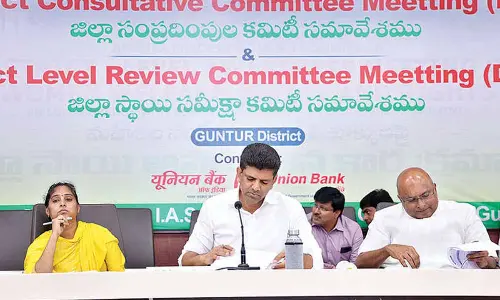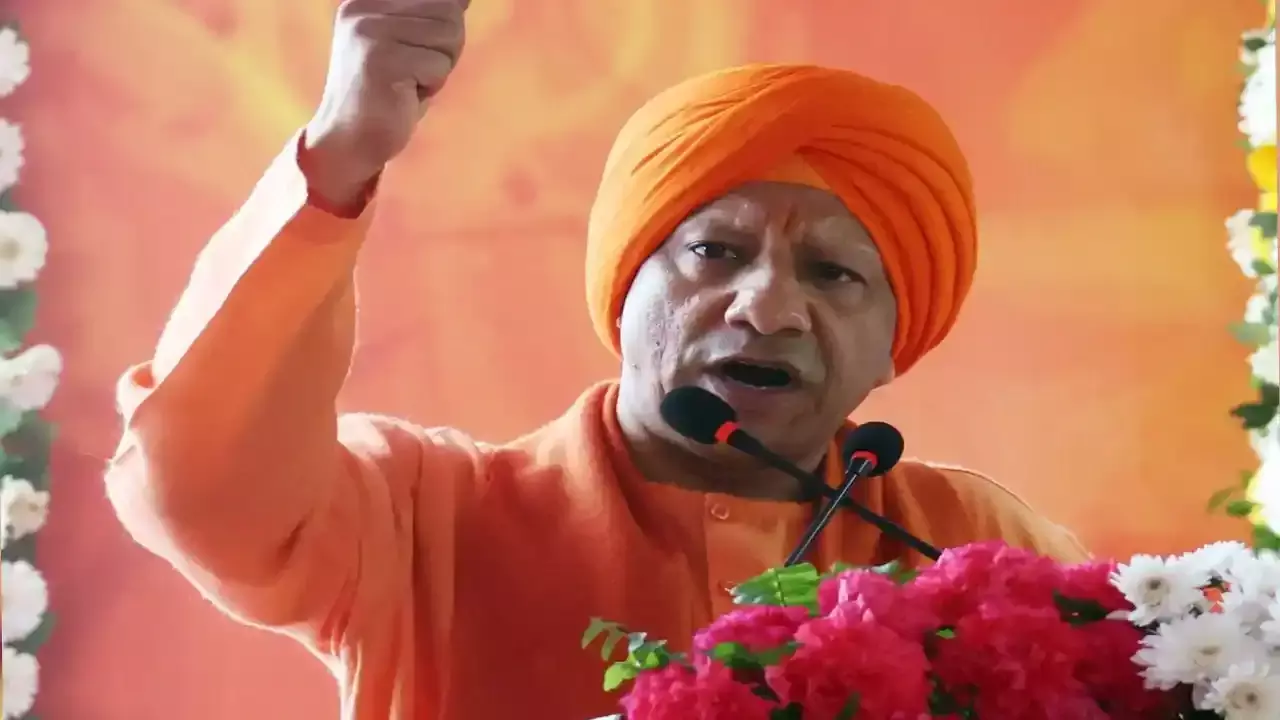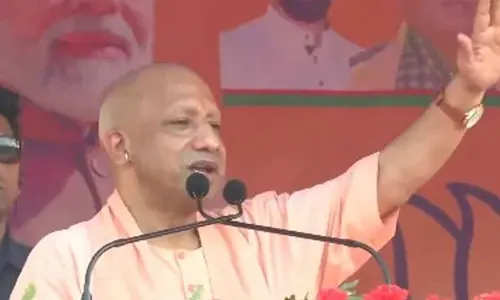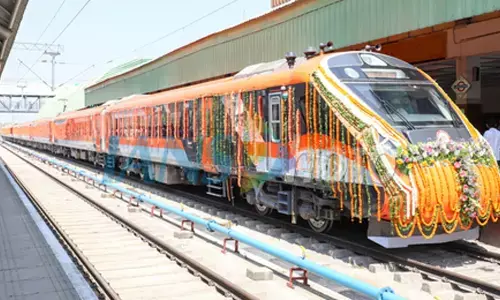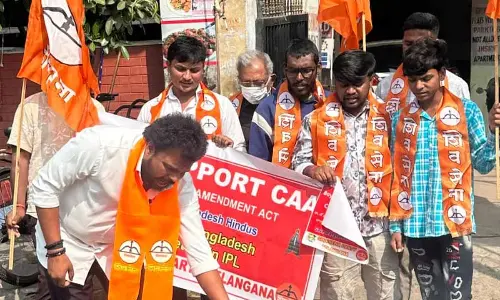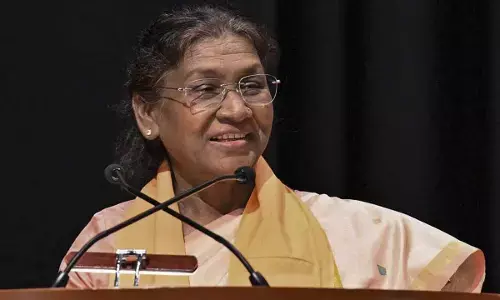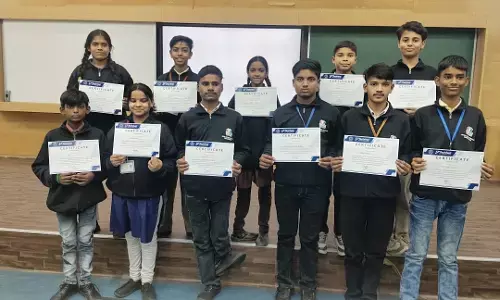 The Additional Protocol – so-called because it is intended to be additional to a state’s existing safeguards agreement with the IAEA – arose from efforts commencing in the 1990s to strengthen the IAEA safeguards system in response to the discovery of Iraq’s nuclear weapon program following the first Gulf War.
The Additional Protocol – so-called because it is intended to be additional to a state’s existing safeguards agreement with the IAEA – arose from efforts commencing in the 1990s to strengthen the IAEA safeguards system in response to the discovery of Iraq’s nuclear weapon program following the first Gulf War.
The Additional Protocol is a legal document negotiated between the International Atomic Energy Agency (IAEA) and an individual state granting the IAEA further inspection authority to that provided in that state’s Comprehensive Safeguards Agreement with the IAEA. The Additional Protocol aims to enable the IAEA inspectorate to provide assurance about both declared and possible undeclared activities and to get a more complete picture of a state’s overall nuclear program. Under the Protocol, the IAEA is granted expanded rights of access to information and sites.
Nuclear Weapons States (NWS) have repeatedly called for universal adherence to the Additional Protocol and have issued working papers during the NPT review process arguing that implementation of the Additional Protocol should become a key standard by which to measure an NPT States Party’s commitment to the Treaty.
Non-Nuclear Weapons States (NNWS), unlike NWS, are subject to comprehensive IAEA safeguards under Article III of the NPT. Some NNWS take the position that the comprehensive IAEA safeguards are sufficient to prevent nuclear proliferation, and that requiring the Additional Protocol as well is unnecessary and burdensome. Some countries in the Middle East, such as Egypt, have also refused to implement the Additional Protocol or undertake additional nonproliferation obligations until Israel signs on to the NPT and/or agrees to a nuclear-weapon-free zone in the region.
Background:
The international call for an Additional Protocol emerged out of the IAEA’s failure to detect Iraq’s efforts to develop weapons of mass destruction (WMDs) prior to the 1991 Persian Gulf War. It was discovered that Iraq had violated its NPT safeguards agreement by building nuclear facilities and failing to declare them to the IAEA. In addition, the IAEA discovered in 1992 that North Korea had diverted plutonium from its civilian program at a declared reactor but had hidden these activities when IAEA inspectors were present. The ease with which Iraq and North Korea were able to do so demonstrated the shortcomings of existing NPT safeguards, as these safeguards allow the IAEA to inspect only declared facilities and materials and only certain areas of these facilities.
Unique Additional Protocols:
All five nuclear weapon states and India have in place Additional Protocols that vary significantly from the Model Additional Protocol issued by the IAEA.
United States: As a nuclear weapon state (NWS), the United States is not required to accept comprehensive safeguards under the NPT, nor to declare any nuclear activities. The Additional Protocol (INFCIRC/288.1) expands the United States-IAEA Safeguards Agreement to include mines and other locations without nuclear materials. However, the United States’ Additional Protocol is limited to civilian nuclear facilities and excludes activities with direct national security significance. In addition, the United States maintains the right to decide when/where to apply managed access procedures. Although the United States Additional Protocol is otherwise very similar to the Model Additional Protocol, its purpose is very different: Rather than enabling the IAEA to detect undisclosed nuclear activities or non-compliance with the NPT, the United States Additional Protocol serves to “assist [the IAEA] in developing the procedures, tools, and techniques that will strengthen the capability of the [IAEA] to detect undeclared nuclear activities in NNWS.”
United Kingdom and France: The Additional Protocols for both the UK and France are designed to assist the IAEA in detecting undeclared nuclear activities in NNWS. Unlike the United States, neither have a national security exemption. Both Protocols generally reflect the Model Additional Protocol, but only apply in cases where activities have links to NNWS.
Russia and China: Both countries’ Additional Protocols do not allow IAEA inspectors physical access to any facilities. Under their respective Additional Protocols, both countries are required to provide information on nuclear imports and exports to and from NNWS, and on activities in cooperation with NNWS relating to the nuclear fuel cycle.
India: As a non-signatory to the NPT, India lacks the comprehensive safeguards that NNWS signatories to the NPT have. India’s Additional Protocol stipulates that only certain facilities are placed under safeguards. The Protocol only requires India to share information relating to nuclear-related exports, while the Model Additional Protocol includes the sharing of information on nuclear fuel-cycle-related research and development, nuclear-related imports, and uranium mining. India’s Additional Protocol also does not provide the IAEA with complementary access provisions, which allow the IAEA to inspect undeclared facilities. India’s Additional Protocol applies many of the voluntary safeguards provisions that exist for nuclear weapon states, although India is not recognized by the IAEA as a nuclear weapon state.
India's Atomic Energy Programme
Past and Future :
India had foreseen the potential for the peaceful utilization of atomic energy at a time when the pioneering activities in this field were geared essentially for military use. More than a year before the traumatic demonstration of the destructive force of atomic energy in
Hiroshima, Dr. Homi Bhabha, the architect of the Indian nuclear programme, had declared that "when nuclear energy has been successfully applied for power production in say, a couple of decades from now, India will not have to look abroad for its experts but will find them ready at hand". This statement captures the essence of India's efforts over the last three decades for the peaceful utilization of atomic energy, namely, the development of scientific and technological ability within the country to design and execute projects right from the laboratory stage to the industrial scale largely on the basis of its own efforts.
India had consciously avoided softer options and chosen the slower and harder path of a programme aimed at self-reliance which, in the long run, has paid substantial dividends. Today India is among the seven or eight countries in the world, and the only developing
country, to have the complete fuel cycle, right from uranium exploration, mining, extraction and conversion, through fuel fabrication, heavy water production and reactors, to reprocessing and waste management. India has also reached a stage where its indigenously
developed know-how can support all the required activities encompassing feasibility studies, site selection, detailed project design, construction, commissioning and operation of any plant in the entire fuel cycle chain. It has taken almost three decades of effort to reach this stage of development. The innumerable hurdles to be overcome along the way have given our scientists and engineers confidence that other difficulties, which may have to be faced in the future, can be surmounted.
THE APPLICATION OF COMMERCIAL NUCLEAR POWER
The decade 1966-76 saw the introduction of nuclear power in India. When early studies on the feasibility of nuclear power were carried out in the late 1950s and early 1960s, it was concluded that threshold conditions for introducing nuclear power on an economic basis
existed in India in the western, northern and southern regions of the country These regions were chosen because of their distance from coal fields, which are largely concentrated in the eastern and central parts of the country. The transportation of coal over long distances to thermal stations continues to strain our transportation system and interruption of supplies have often caused load shedding. In some power systems, especially in the southern region where the bulk of electricity was traditionally provided by hydroelectric power plants, excessive load shedding had become a common phenomenon due to successive failures of
the monsoons. Power production from oil and gas were never seriously considered in India, since a substantial portion of our requirements have to be imported. With increases in oil prices power production using oil became unfeasible. It was, therefore, recognized that power production in India would have to continue to rely on coal and hydro and, increasingly over
the years, on nuclear power In formulating the strategy for nuclear power development in India, we had to take into account that, while our uranium reserves are rather modest (53 000 tonnes of which 30,000 are reasonably assured) we have one of the largest reserves of thorium in the world.
India is one of the few countries at present continuing with the development of naturaluranium- fuelled reactors. The major reason has been our preference for a reactor system that can be operated using indigenous resources. This system also has the advantage of an efficient burnup, producing significant quantities of plutomum for use in fast reactors.
India's first nuclear power station at Tarapur, near Bombay, consisted, however, of two boiling-water reactors (BWR), each of about 200 MWe capacity, which went into operation in 1969. The decision to go in for a BWR system for our first nuclear power plant was
prompted by the desire to demonstrate the economic viability of nuclear power in the country without delay by using a proven system. This station was a turnkey project awarded to General Electric of the USA on the basis of a global tender. The involvement of Indian
personnel was, however, substantially more than the usual turnkey project Our scientists and engineers were responsible for all the preliminary work such as site selection, tender preparation and evaluation and also participated, to the extent possible, in the review of
detailed designs, construction, inspection and testing of equipment and commissioning activities. Since 1975, the enriched uranium fuel elements for this station have been fabricated in India at the Nuclear Fuel Complex in Hyderabad from uranium hexafluonde imported from the USA We had not gone in for the development of indigenous enrichment capability primarily since a commercial scale enrichment plant would not be economically feasible for only one power plant for which, in any case, we had entered into an agreement for life-time fuel supplies.
Third atomic power station, consisting of two heavy-water reactor units of 235 MWe each, the first of which is expected to attain criticahty next year, is being built near Madras in Southern India. The full responsibility for the execution of this project rests with our own
engineers and scientists. Several design modifications and improvements have been introduced at this plant for reasons of economy and to take into account local conditions. The fourth power station under construction at Narora in the State of Uttar Pradesh in
Northern India also consists of two 235 MWe heavy-water reactors. These reactors have several new design features and concepts, including earthquake resistant design of the buildings and reactor components. Among the new features of the Narora reactors are an
integral calandna-end-shield assembly, two independent fast-acting shut down systems for safety and reliability and a simplified water-filled calandria vault. We are standardizing the Narora designs and propose to repeat this design for two additional projects before we move on to construction of 500 MWe reactors of our own design. For certain components, such as reactor coolant pumps and steam generators, we have decided to standardize not only for the current size of reactors under construction, namely, 235 MWe, but also for the next size of EiOO MWe. We propose to achieve this by using twice the number of components for the larger reactors and defer the scaling-up effort required by our industry to a later stage.
THE IMPACT OF INDIA'S NUCLEAR PROGRAMME
To achieve our present level of self-sufficiency, the Department of Atomic Energy undertook tasks which perhaps have not been attempted by a similar organization anywhere else in the world. This reflects both our inherent weakness and our strength. We had to locate domestic manufacturers and persuade them to put in the effort to make precision components, both heavy and light, for the first time in the country. The Department of Atomic Energy itself had to evolve procedures for manufacture, quality control, inspecting techniques, etc.
Often we had a difficult time in locating a single manufacturer with all the facilities for completing a job and we were forced to farm out such work to different manufacturers.
This brought in its wake special problems of co-ordination between different shops, sequencing operations, corrective actions for deviations, etc., and finally we had to take up the work of the assembly of components In some cases, as for example, certain coolant
channel components, we could not find any manufacturer willing to put in the effort and the money for such high-precision items, we could have taken the easier route of importing these components but having decided to tackle the problem and solving it ourselves we
undertook this work within the organization Nuclear power in India has not only been demonstrated as an economically competitive and safe source of energy but it has also played the invaluable role of a catalyst for the scientific, technical and industrial development of the country as a whole. Pioneering work in the field of process and equipment design for various chemical operations or metallurgical activities were carried out by the Department of Atomic Energy. The success of our national effort has made our industry, both in the private and public sectors, conscious of its potentialities for excellence. There was a significantly higher level of quality consciousness and improvements in the shop practices of almost all manufacturers who have been associated with our programme Though the resultant upgrading of the technological base was initially a difficult and expensive task, it has often given our industry the confidence and ability to secure expert orders against international tenders even for conventional equipment for sugar plants, cement plants, power plants, etc.
Work in the fields of nuclear fuels and materials has also generated internal demands for advanced materials of construction and for the means of producing them. For instance, the techniques developed for the extrusion of Zircaloy has found application in the
extrusion of alloy steel tubes for use in our petroleum industry. The experience gained in the operation of highly instrumented plants in the nuclear industry permit local design of various chemical plants. Our expertise in vacuum melting and casting of uranium could be useful for the production of metals and alloys of controlled composition and to the progress of powder metallurgy. Even in the conventional field of civil construction, the experience gained on our nuclear projects has resulted in the mastering of new techniques.
One example is in the field of pre-stressed concrete. The reactor buildings at the Madras station are built completely in pre-stressed concrete for a designed internal pressure containment of over one atmosphere. There is a large number of similar examples of the beneficial spinoff from the atomic energy programme to industrial development in the country.
THE FUTURE
Our reactors in operation and under construction presently account for only about 1300 MWe of installed capacity. The "high" estimate for our projected installed capacity at the turn of this century is a relatively modest 10 000 MWe, of which 3000 MWe is expected to be provided by fast breeder reactors. This will not be an easy task. Although we can build nuclear power plants at lower investment costs than are achieved in other parts of the world, the initial investment required and the gestation periods involved are still greater than those for coal-fired power stations. The availability of adequate investment capital could, therefore, pose a constraint in the immediate future. In the longer run, investment in nuclear power is expected to increase as mining and transport of coal in the next few decades becomes progressively more capital-intensive. We will also have to continue our efforts to upgrade domestic industry to meet the additional requirements of our programme.
India's programme for the peaceful utilization of atomic energy has, to a certain extent, been affected by restrictive trade practices and unilateral embargoes on nuclear supplies by certain countries. These are unfortunate developments since they are essentially based on political mistrust and discrimination. In the case of India, such measures will cause temporary delays and perhaps cost over-runs for projects in the near future. In the long run, these developments will only strengthen and accelerate India's programme for complete self sufficiency in the nuclear field.
Implementation of safeguards by the IAEA is based on a safeguards agreement concluded with the IAEA by each state. In the case of parties to the NPT, the NPT requires non-nuclear-weapons states to accept IAEA safeguards on all their nuclear material, and to conclude a safeguards agreement for this purpose. This form of safeguards used to be known as “full scope safeguards”, and today is known as “comprehensive safeguards”. The text of a standard safeguards agreement, INFCIRC/153 , was negotiated in the IAEA’s Board of Governors, to be used for each non-nuclear-weapon state NPT party. Agreements on the INFCIRC/153 model are called “comprehensive safeguards agreements”.
India on Monday said its decision to ratify the additional protocol to Indian specific safeguard agreement was a “signal” that the country will abide by its international obligations.
The ratification sends a strong signal that Prime Minister Narendra Modi, elected by a landslide last month, wants to bolster strategic and trade ties with the United States when he meets President Barack Obama in Washington in September.
India, which first tested a nuclear weapon in 1974, is not a party to the Non-Proliferation Treaty. That means its military nuclear programme is not subject to inspections by the IAEA, the United Nations nuclear watchdog.
Both India and Pakistan tested nuclear weapons in 1998, setting off an arms race between neighbours that have fought three wars since independence. That in turn has raised tensions with Asian superpower China, Pakistan's patron.
In a report last week, a defence research group said one Indian enrichment facility, located near Mysore, was undergoing an expansion and could be capable of producing a large surplus of weapons-grade uranium from mid-2015.

 The Additional Protocol – so-called because it is intended to be additional to a state’s existing safeguards agreement with the IAEA – arose from efforts commencing in the 1990s to strengthen the IAEA safeguards system in response to the discovery of Iraq’s nuclear weapon program following the first Gulf War.
The Additional Protocol – so-called because it is intended to be additional to a state’s existing safeguards agreement with the IAEA – arose from efforts commencing in the 1990s to strengthen the IAEA safeguards system in response to the discovery of Iraq’s nuclear weapon program following the first Gulf War. 







